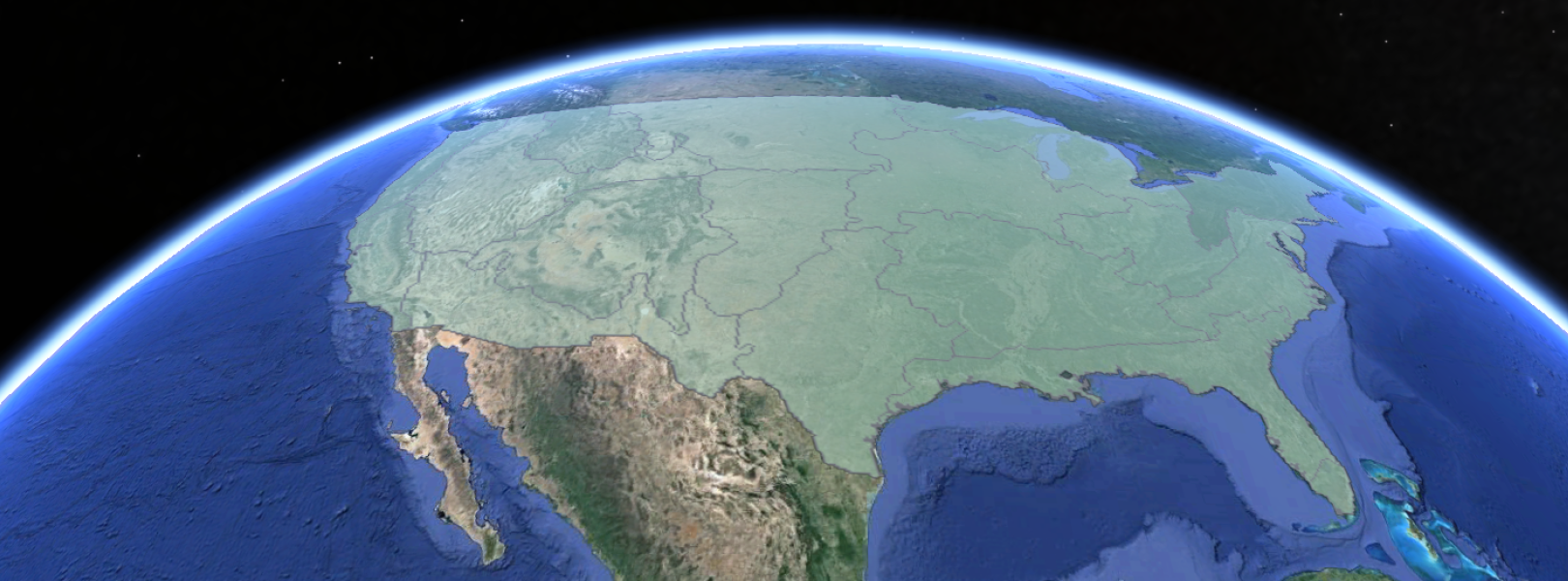Spatial and Temporal Design

Quantifying ecological processes over time and large spatial extents requires a complex spatiotemporal sampling design. To characterize ecological change and uniquely support studies that link individual local measurements to site-level and continental-scale questions about ecological change, the Observatory:
- Strategically locates sites across the U.S. to capture variability in ecological and climatological conditions;
- Monitors and records conditions at varying time scales from multiple data points per second to multiple data points per year;
- Calculates statistics and uncertainties for wider time ranges, such as 30-minute, daily, monthly, and yearly;
- Coordinates local measurements in the field with high-resolution airborne remote sensing data, which may be further integrated with datasets generated by other researchers or scientific organizations; and
- Provides resources, such as collection and processing protocols as well as code resources, for the ecological community to take comparable measurements and samples, and integrate observations and datasets independently.
Read the 2011 Science Strategy document

Scalable Design: Local to National
NEON’s ecoclimatic Domain approach strategically determined site locations representative of ecological and climatological conditions. NEON statistically partitioned the continental U.S., Hawaii, and Puerto Rico into 20 ecoclimatic Domains that represent distinct regions of vegetation, landforms, and ecosystem dynamics to capture the full range of U.S. ecological and climatic diversity. In each Domain, NEON collects data about plants, animals, soil, nutrients, freshwater, and the atmosphere using sensor measurements and field observations.
NEON field-based measurements provide detailed information that characterizes local, site-level change. Airborne data combined with site-level data capture contiguous site-level information and can be combined with existing satellite data to support regional to continental characterization of ecological processes.
Airborne remote sensing data
NEON uses sensors mounted on an airplane to collect data that characterizes ecological conditions continuously over the entire area of its field sites. These airborne data, combined with site-level measurements that often represent smaller plots, are used to estimate vegetation height, density, health, and even leaf chemistry across entire NEON sites and regions. These site-level NEON data products support the study of ecological change across disparate ecosystems throughout the U.S.
Measurements at multiple scales
Scaling information from NEON sites to the continental U.S., Hawaii, and Puerto Rico presents considerable challenges that must be addressed through systematic sampling within a framework of multi-scaled observations, analysis, and modeling. NEON provides opportunities to integrate local to continental-scale measurements that characterize ecological change. For example, NEON 1) measures individual trees at sites and 2) collects remote sensing data that characterize trees and forests over multiple sites. Scientists can integrate these measurements with existing nationwide datasets, such as satellite derived land cover data. Combined, these data provide a more integrated view of carbon flux and vegetation cover over time.
Field-based measurements
At each site, NEON collects biological, chemical, and physical measurements and samples using manual field measurements and calibrated sensors. NEON produces data products that characterize site-level conditions at varying spatial and temporal resolutions. For example, field technicians collect vegetation data that identifies individual tree species and measures vegetation height and density within particular plots. Collected over time, this information can be used to track changes in vegetation structure and composition. NEON site-level observations also offer direct measurements of the ecosystem exchange of energy, water, and carbon at small spatial scales. Site-level estimates of water and carbon fluxes drive models that characterize and predict the responses of global biogeochemical cycles to changing climate and land cover.

NEON collects measurements at various scales from in situ (1) to higher-resolution airborne (2). NEON's higher-resolution in situ and airborne data can be integrated with existing satellite derived products (3) to create continental datasets.